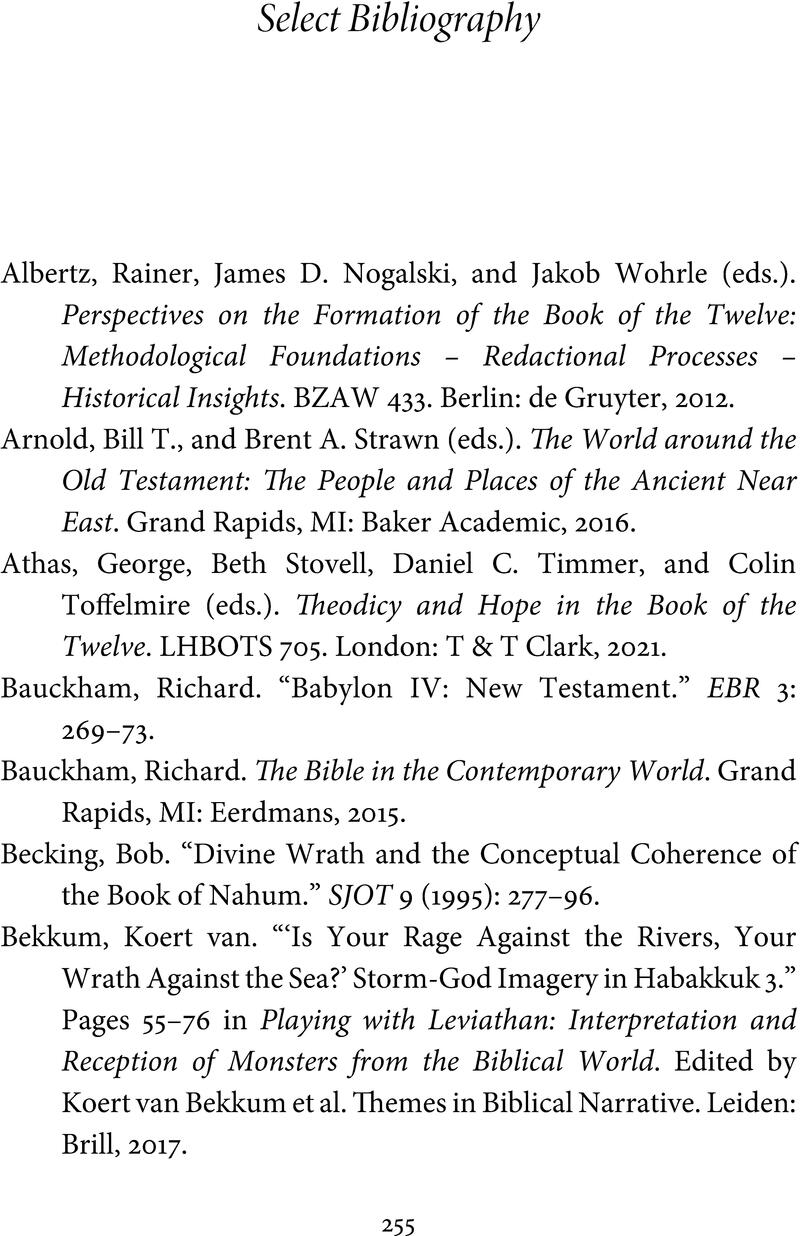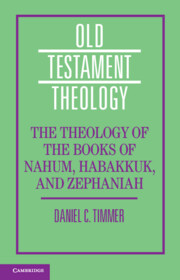Book contents
- The Theology of the Books of Nahum, Habakkuk, and Zephaniah
- Old Testament Theology
- The Theology of the Books of Nahum, Habakkuk, and Zephaniah
- Copyright page
- Contents
- General Editors’ Preface
- Preface
- Acknowledgments
- Abbreviations
- Chapter 1 Reading Ancient Israelite Prophetic Books
- Chapter 2 The Theology of the Book of Nahum
- Chapter 3 The Theology of the Book of Habakkuk
- Chapter 4 The Theology of the Book of Zephaniah
- Chapter 5 Conclusion
- Further Reading
- Select Bibliography
- Scripture Index
- Author Index
- Subject Index
- References
Select Bibliography
Published online by Cambridge University Press: 28 March 2024
- The Theology of the Books of Nahum, Habakkuk, and Zephaniah
- Old Testament Theology
- The Theology of the Books of Nahum, Habakkuk, and Zephaniah
- Copyright page
- Contents
- General Editors’ Preface
- Preface
- Acknowledgments
- Abbreviations
- Chapter 1 Reading Ancient Israelite Prophetic Books
- Chapter 2 The Theology of the Book of Nahum
- Chapter 3 The Theology of the Book of Habakkuk
- Chapter 4 The Theology of the Book of Zephaniah
- Chapter 5 Conclusion
- Further Reading
- Select Bibliography
- Scripture Index
- Author Index
- Subject Index
- References
Summary

- Type
- Chapter
- Information
- The Theology of the Books of Nahum, Habakkuk, and Zephaniah , pp. 255 - 261Publisher: Cambridge University PressPrint publication year: 2024



